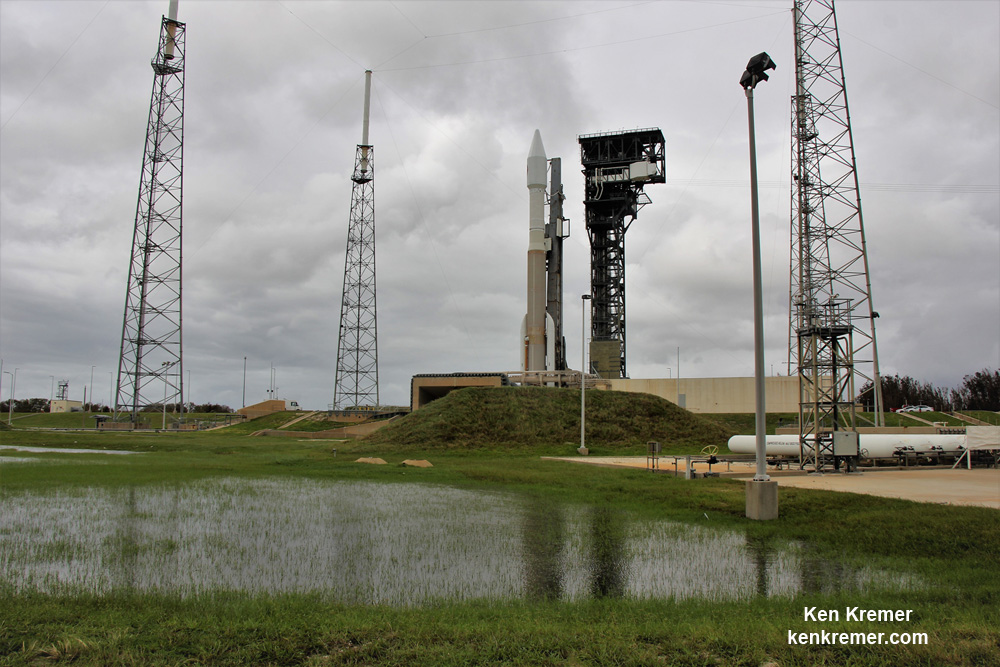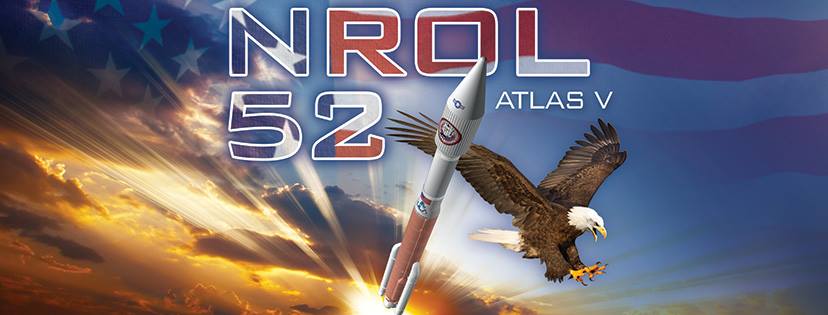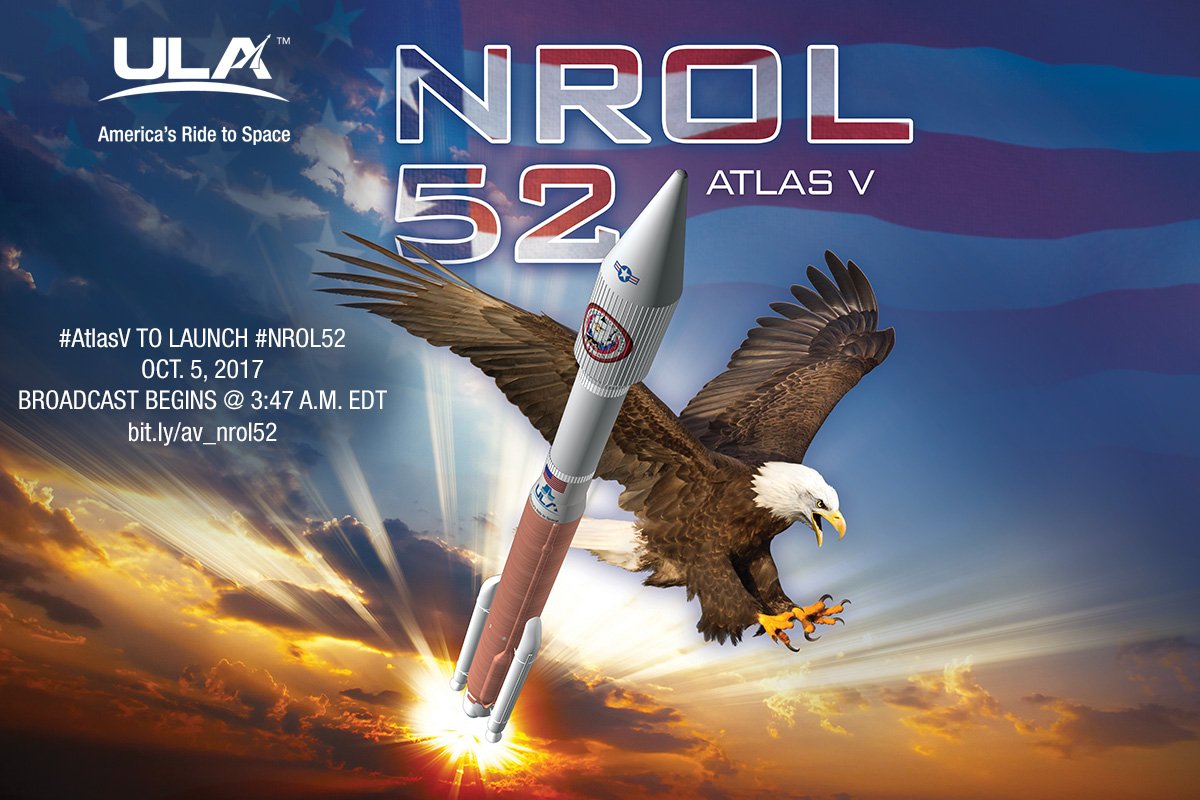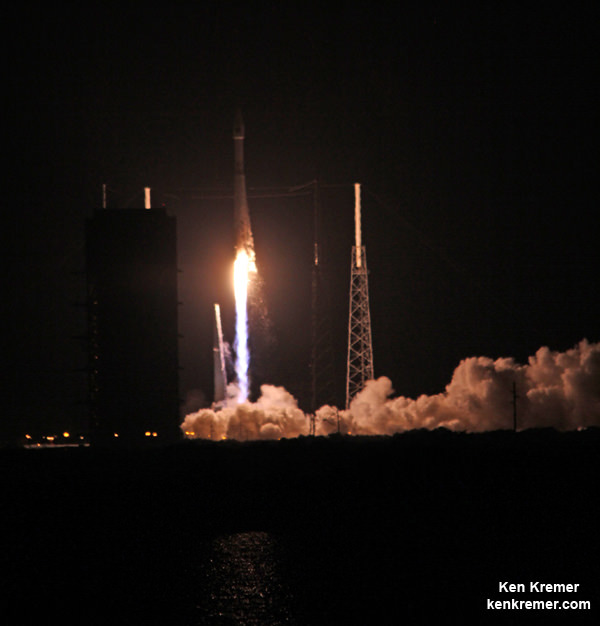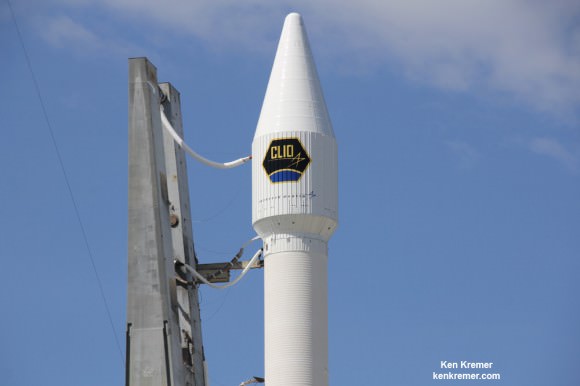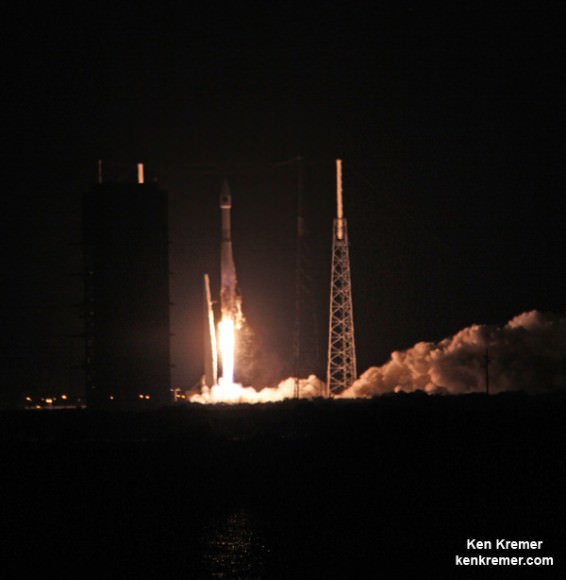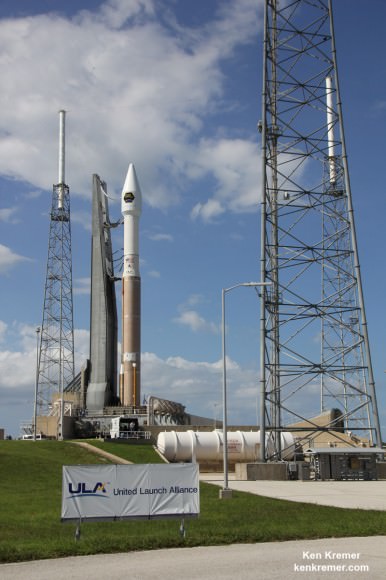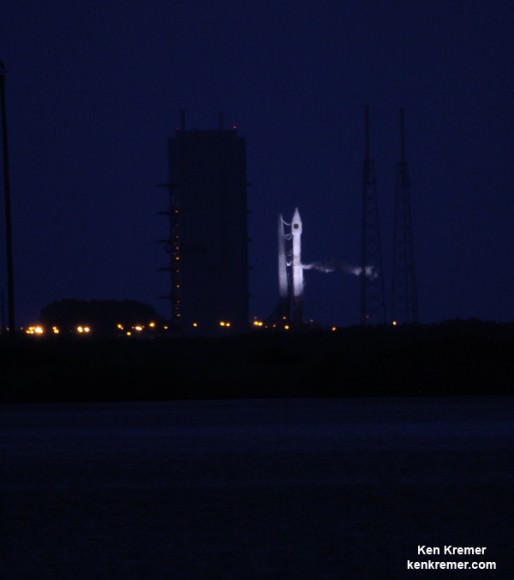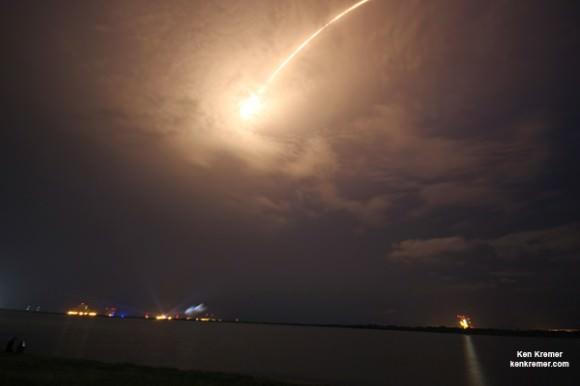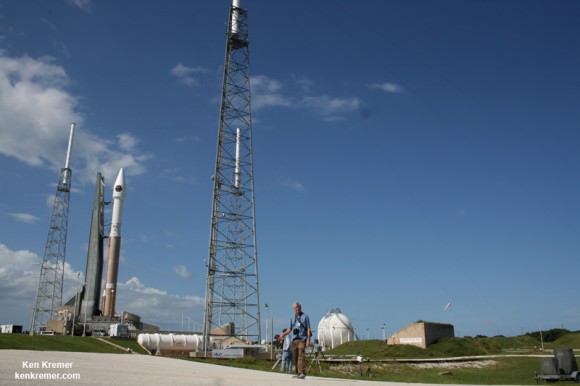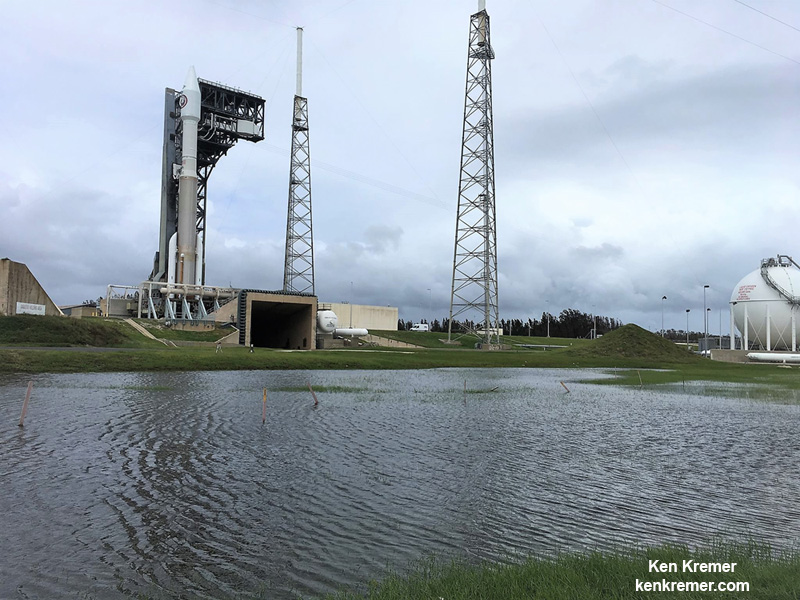
CAPE CANAVERAL AIR FORCE STATION, FL — A classified spy satellite for the U.S. governments National Reconnaissance Office (NRO) is set to kick of a launch double header this week on the Florida Space Coast with what should be a majestic overnight liftoff Thursday, Oct. 5, of a United Launch Alliance (ULA) Atlas V. UPDATE: Rain delay to Fri 10/6 at 403 AM EDT. Reset to 10/7 at 339 AM EDT
A SpaceX Falcon 9 will follow up at dinnertime Saturday, Oct. 7 with a commercial satellite launch if all goes well and the currently unsettled and rainy weather clears out in time.
A ULA Atlas V launch carrying the NROL-52 mission in support of national security is targeted for blastoff Thursday at 4:07 a.m. EDT (0807 GMT) from seaside Space Launch Complex-41 at Cape Canaveral Air Force Station in Florida.
The venerable two stage Atlas V stands 194 feet tall and sports a 100% success record. The first stage will generate approx. 1.6 million pounds of liftoff thrust.
The nighttime liftoff should look absolutely stunning affording space coast region witnesses a spectacle they won’t forget. If it’s not obscured by clouds the launch should be visible for many dozens and dozens of miles away.
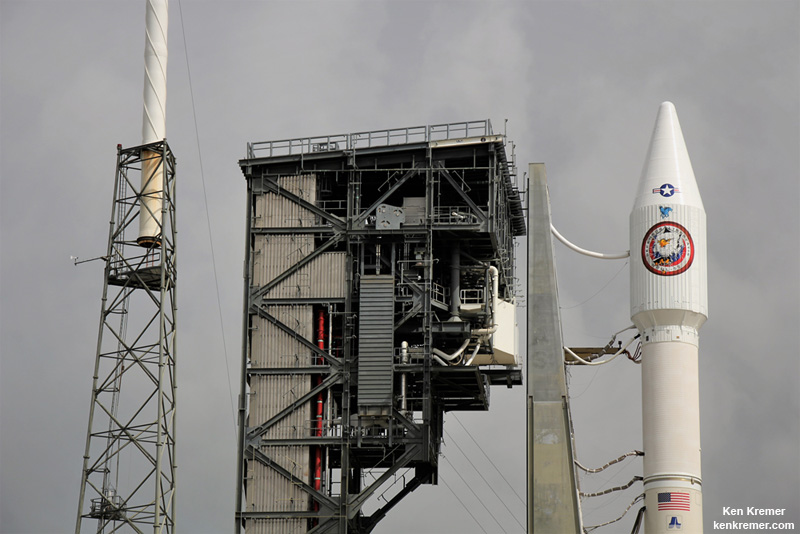
Over the past week the region has seen torrential downpours off and on and many areas have been sporadically flooded.
New temporary lakes have even appeared at pad 41 as I saw during our media visit to set up remote launch cameras today.
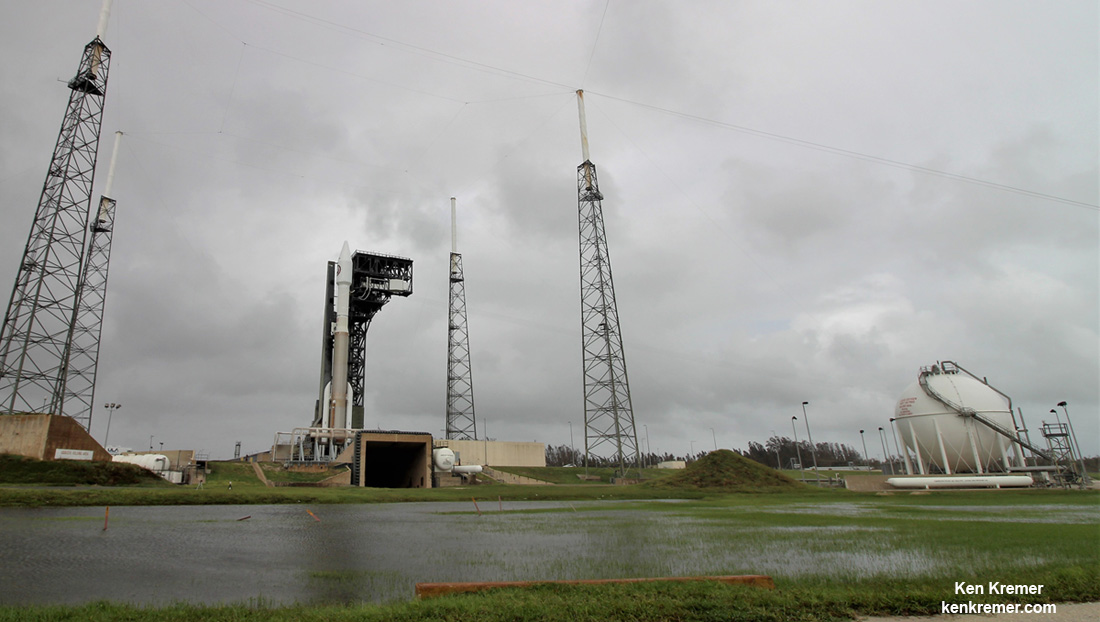
So for space and rocket enthusiasts that’s 2 launches in just over 2 days this week and more than enough reason to come on over.
Both launches were postponed several days in the aftermath of Hurricane Irma which walloped the Kennedy Space Center and Cape Canaveral Air Force Station launch base in early September – shortly after the SpaceX Falcon 9 blasted off with the US Air Force X-37B military mini-shuttle on Sept. 7 from the Kennedy Space Center.
You can watch the Atlas V rocket launch live via a ULA webcast at – www.ulalaunch.com and www.youtube.com/unitedlaunchalliance
The ULA program starts at 3:47 a.m. ET.
The launch window extends for an hour until 5:07 a.m. ET.
In the event of delay for any reason, the next launch opportunity is Friday, Oct 6. The launch time opens several minutes earlier on Friday.
The rocket was rolled out to the pad this morning.
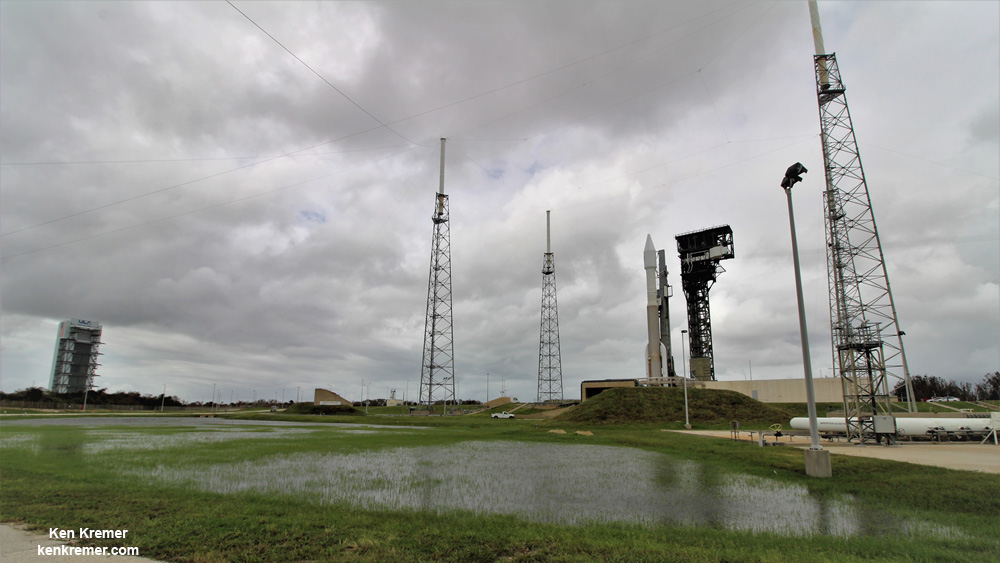
The weather looks iffy at this time with a 60% chance of favorable conditions at launch time according to U.S. Air Force meteorologists with the 45th Space Wing Weather Squadron at Patrick Air Force Base. The primary concerns on Oct 5 are for Cumulus Clouds and Ground Winds.
The odds drop to 30% favorable for the 24 hour scrub turnaround day on Oct. 6.
This is ULA’s second NRO launch using an Atlas V rocket in the past two weeks. NROL-42 launched from Vandenberg AFB, Ca. on September 24, 2017.
Unlike most classified launches the launch time for the NROL-52 payload has been announced ahead of time.
Otherwise virtually everything about the clandestine payload, its mission, purpose and goals are classified top secret and it is certainly vital to America’s national security.
The NRO runs a vast fleet of powerful orbital assets hosting a multitude of the most advanced, wide ranging and top secret capabilities.
NROL-52 is being launched for the NRO on an intelligence gathering mission in support of US national defense.
The possible roles for the reconnaissance payload include signals intelligence, eavesdropping, imaging and spectroscopic observations, early missile warnings and much more.
This ULA video profiles the NROL-52 launch:
The Atlas V will launch in the 421 configuration. The first stage is powered by the Russian made RD-180 engines and is augmented with two solid rocket boosters. The payload fairing is 4 meters (13.1 feet) in diameter and the upper stage is powered by a single-engine Centaur.
This marks the 6th and final Atlas V launch of the year.
The NROL-52 mission will mark ULA’s seventh launch of 2017 and 26th for the National Reconnaissance Office.
NROL-52 will be the 74th flight of the Atlas V rocket and the seventh in the 421 configuration.
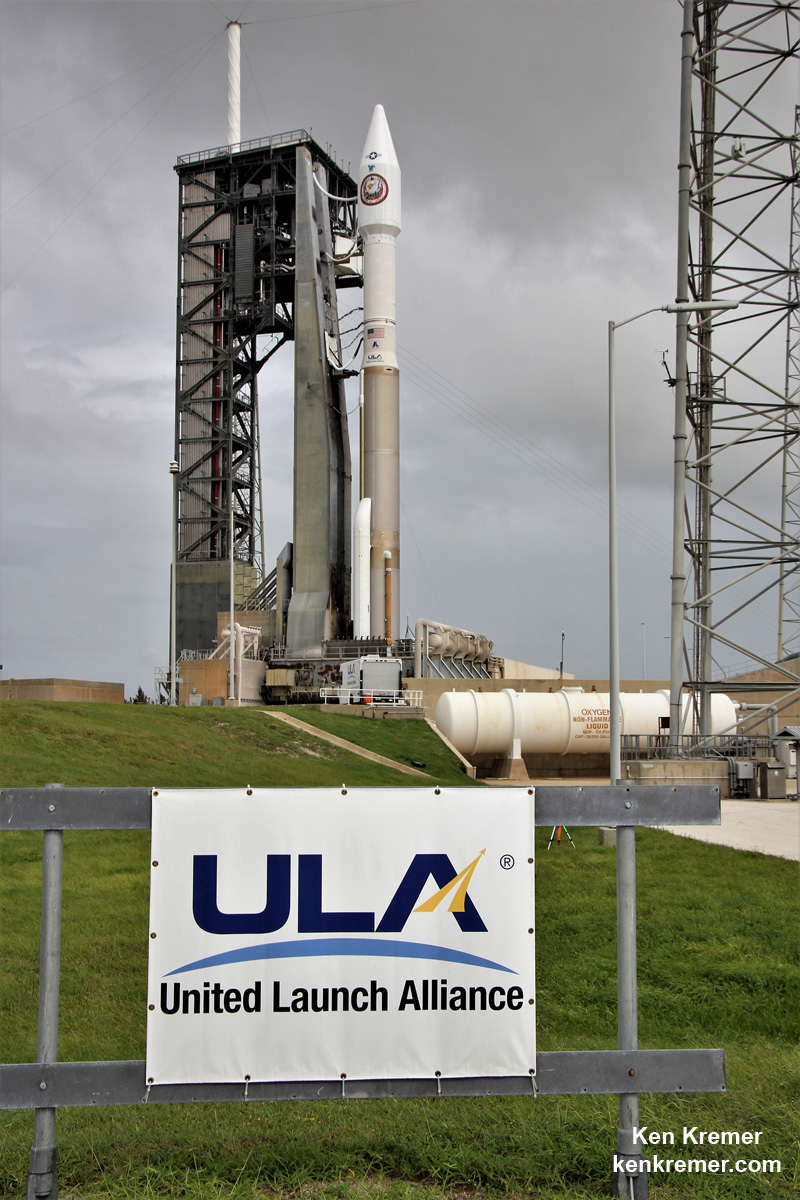
ULA Atlas V rocket will deliver the classified NROL-52 spysat to orbit for the National Reconnaissance Office. Liftoff targeted for 4:07 a.m. ET, Oct. 5, 2017 from Space Launch Complex-41 at Cape Canaveral Air Force Station in Florida. Credit: Ken Kremer/kenkremer.com
Watch for Ken’s continuing onsite NROL-52, SpaceX SES-11 and NASA and space mission reports direct from the Kennedy Space Center and Cape Canaveral Air Force Station, Florida.
Stay tuned here for Ken’s continuing Earth and Planetary science and human spaceflight news.
………….
Learn more about the upcoming ULA Atlas NRO NROL-52 spysat launch on Oct 5 and SpaceX Falcon 9 SES-11 launch on Oct 7, JWST, OSIRIS-REx, NASA missions and more at Ken’s upcoming outreach events at Kennedy Space Center Quality Inn, Titusville, FL:
Oct 4-6, 8: “ULA Atlas NRO NROL-52 spysat launch, SpaceX SES-11, CRS-12 resupply launches to the ISS, Intelsat35e, BulgariaSat 1 and NRO Spysat, SLS, Orion, Commercial crew capsules from Boeing and SpaceX , Heroes and Legends at KSCVC, ULA Atlas/John Glenn Cygnus launch to ISS, SBIRS GEO 3 launch, GOES-R weather satellite launch, OSIRIS-Rex, Juno at Jupiter, InSight Mars lander, SpaceX and Orbital ATK cargo missions to the ISS, ULA Delta 4 Heavy spy satellite, Curiosity and Opportunity explore Mars, Pluto and more,” Kennedy Space Center Quality Inn, Titusville, FL, evenings
